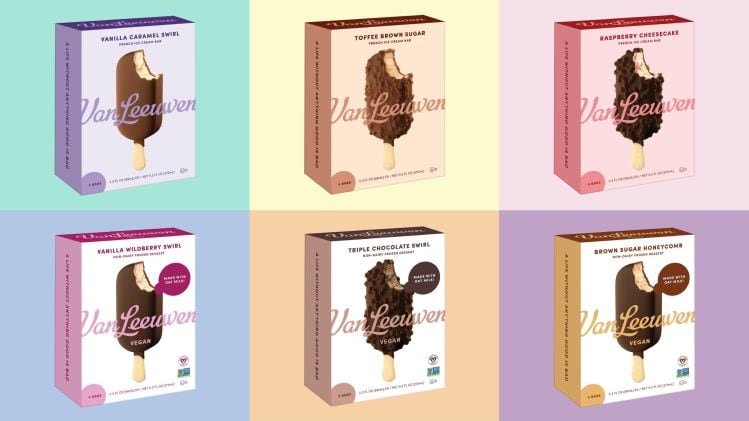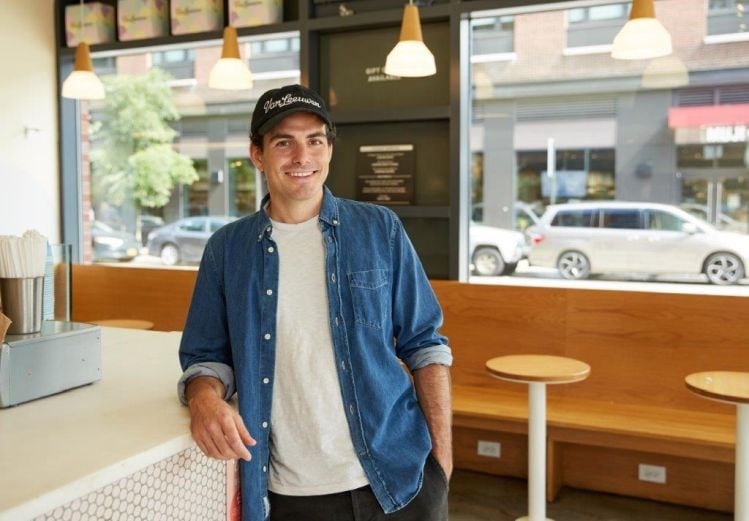Amidst all the noise, Brooklyn-based Van Leeuwen Ice Cream – which launched out of a truck in New York City in 2008 and has since developed a cult following with its high butterfat, artisanal pints and minimalist branding – has largely stuck to its knitting over the years, although founders Ben and Pete Van Leeuwen and Laura O'Neill saw an opportunity in plant-based from the get-go.
“We got into dairy-free almost from the beginning, and now we’re close to 50% vegan in our scoop shops,” Ben Van Leeuwen (CEO) told FoodNavigator-USA.
But the brand – which now operates 23 scoop shops and supplies around 3,000 grocery stores - has not joined the arms race to create a product with 200 calories a pint.
Ice cream – or at least the kind its founders have poured their blood, sweat and tears into over the last 13 years – is a gastronomic delight made out of milk, cream, cane sugar, and egg yolks, not something you should be eating a bucket of every night, suggested Van Leeuwen.
“Ice cream is not 'better for you.' I don’t even understand the concept. If you want to be really healthy, just eat less ice cream… or eat lentil soup. I feel like, if we’re going to do it, let’s go all the way.
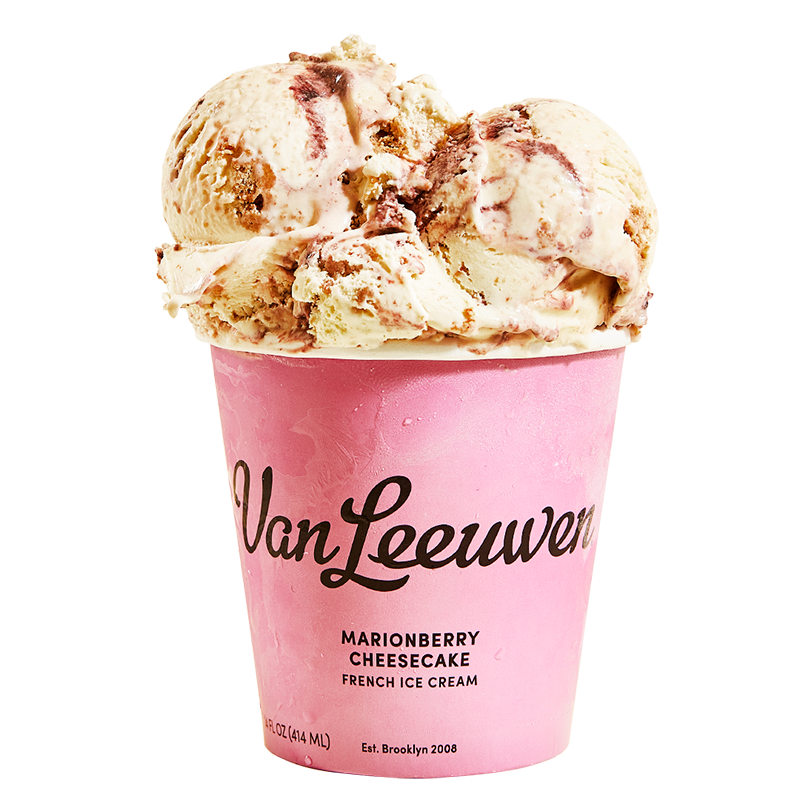
“If I’m going to eat ice cream I want 18% butterfat* with lots of chocolate chips. Just don’t eat a pint of it every day."
He added: "We are 17-19% butterfat depending on the flavor, which is two to three points higher than Häagen-Dazs and Ben & Jerry’s, and we use a lot of egg yolk to give a chewiness and thickness to our ice cream. Whether it's dairy or vegan, we’re at about 45% total solids, whereas a lot of other super-premium brands are sub-40%."
Sicilian Pistachio
“We’re also hyper-focused on high-quality ingredients," added Van Leeuwen, who makes his ultra-premium wares at a 5,000 sq ft factory in Brooklyn churning out 1.5 million gallons a year, which he reckons might actually make it “the most productive factory per square foot maybe in the world.”
While cynics might point out that every food marketer waxes lyrical about using the best ingredients, it’s not just marketing BS, says Van Leeuwen. “We use Sicilian pistachios because they’re the best [not just because the regional name makes the ice cream sound more upmarket].
“It's the most expensive flavor we make, and Walmart picked it up this year, which we're really excited about, and we said, OK, we're going to be producing more of it, can we produce it for any less?
"So we made five ice creams with five different types of pistachios, so Turkish pistachios, pistachios from another part of Italy, and so on, and the Sicilian pistachio blew everything else out of the water in a blind taste test. It was actually quite a relief because if it hadn't we'd have been asking why have we been spending all this extra money all these years?"
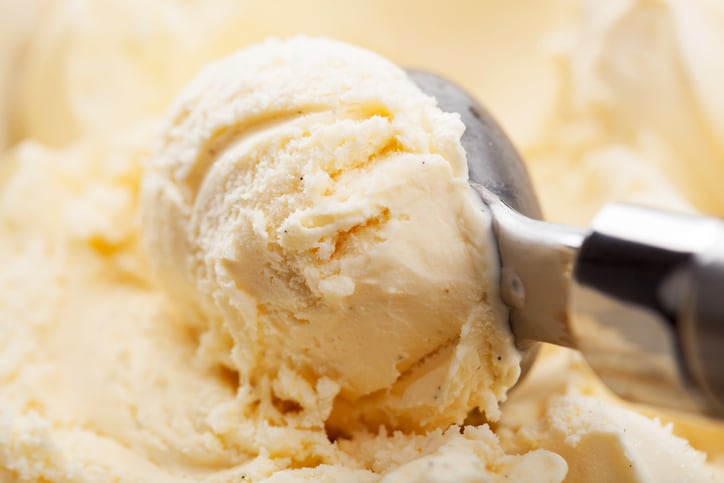
Nielsen data (total US, xAOC) shows US retail sales of ice cream - which were flat in 2019 - surged 16.4% to $7.36bn in the 52 weeks ended Feb 15, 2021.
Sales of non-dairy ice cream - which were slightly down in 2019 - grew 20.2% to $333.4m.
‘We’re not going to be on a par with Ben & Jerry’s and Häagen-Dazs on price… But we didn’t want the price disparity to be jarring’
As the category has become more complex and crowded meanwhile, Van Leeuwen has responded with a pared down approach to branding with a different color for each flavor and nothing but the brand name, the flavor, and the descriptor (‘French Ice Cream’) on the front of the pack.
The company – which Van Leeuwen says has always had a “culture of frugality” and only took on outside funding in 2018 - also saw a significant opportunity to broaden its consumer base if it could get into the $4.99-$7.99 pricing tier, said Van Leeuwen.
“Over the past three years we've got prices down through logistics and purchasing, but not by changing the product. It was things like, can we bring in containers of pistachio paste from Sicily, not just pallets? Can we cut out this one distribution center and send trucks somewhere else?
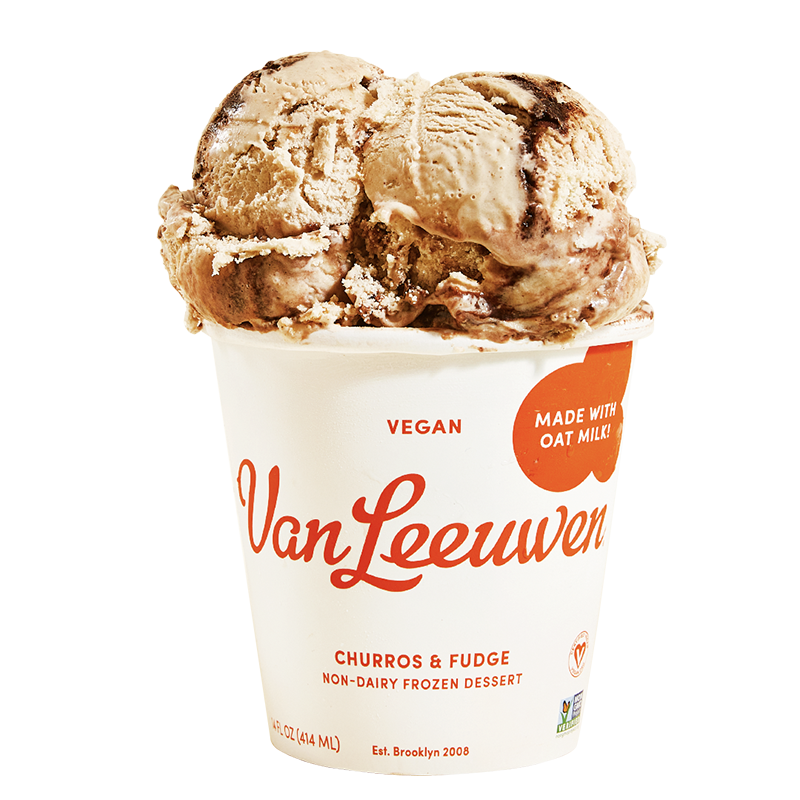
“We’re not going to be on a par with Ben & Jerry’s and Häagen-Dazs because we don’t have the scale and we’re using more expensive ingredients. But we didn’t want the price disparity to be jarring.”
COVID-19: '18 of our 23 scoop shops are in New York City'
As for COVID-19 - which prompted a surge of growth in retail sales of ice cream last spring as locked-in consumers splurged on comfort food – it’s presented challenges for Van Leeuwen, he said. Like many brands, it experienced a spike in CPG sales in the spring, but it also saw a pretty cataclysmic drop-off in sales at its scoop shops, the bulk of which are located in New York City, one of the hardest hit in the early months of the pandemic.
“18 of our 23 scoop shops are in New York City, and year over year we’ll be down more than 50% in revenue there," said Van Leeuwen.
"But in Los Angeles, we’ve actually seen higher sales year over year since the pandemic started because our delivery business just blew up.”
Vegan frozen desserts: 'They've been really successful because we've put just as much energy and care into them as we have into the dairy ice cream'
From a product development perspective, Van Leeuwen invested heavily in dairy-free products from the outset, using a blend of cashews, coconut cream, cane sugar, coconut oil and cocoa butter for its first wave of vegan frozen desserts, and recently introduced a new range featuring oatmilk as the first ingredient.
While Van Leeuwen was not interested in going head to head with Halo Top or other light ice cream brands, producing a luxurious vegan product was important to the founders from the beginning, he said.
"They've been really successful because we've put just as much energy and care into them as we have into the dairy ice cream. It was never a case of 'Let's throw a couple flavors on the menu to please the vegans and the lactose-intolerant.' If you come into our store and choose anything on the menu, it has to be awesome. And you want choice.
"It's such a bummer when you're a vegan or vegetarian and you go into a restaurant with 40 things on the menu and you can only eat two of them."
Ice cream bars
The company's latest innovation – a line of ice cream bars, made by a co-packer - includes dairy and vegan options dipped in thick dark chocolate. Available for purchase online for nationwide delivery from the Van Leeuwen website, they will hit grocery stores including Whole Foods, Giant, Central Market, Big Y and Heinen's, in March, said Van Leeuwen.
“We’re using a custom blend of Fairtrade organic chocolate that has a really intense flavor that I’ve not tasted in any other chocolate novelty on the market. It’s really high-quality but it doesn’t have the earthiness and fruitiness you can get with some of the single origin chocolates that as Brooklyn kids we were obsessed with. It’s a really classic chocolate taste.”
* The FDA’s legal definition of ‘ice cream’ stipulates (among other things) it must have at least 10% butterfat.
